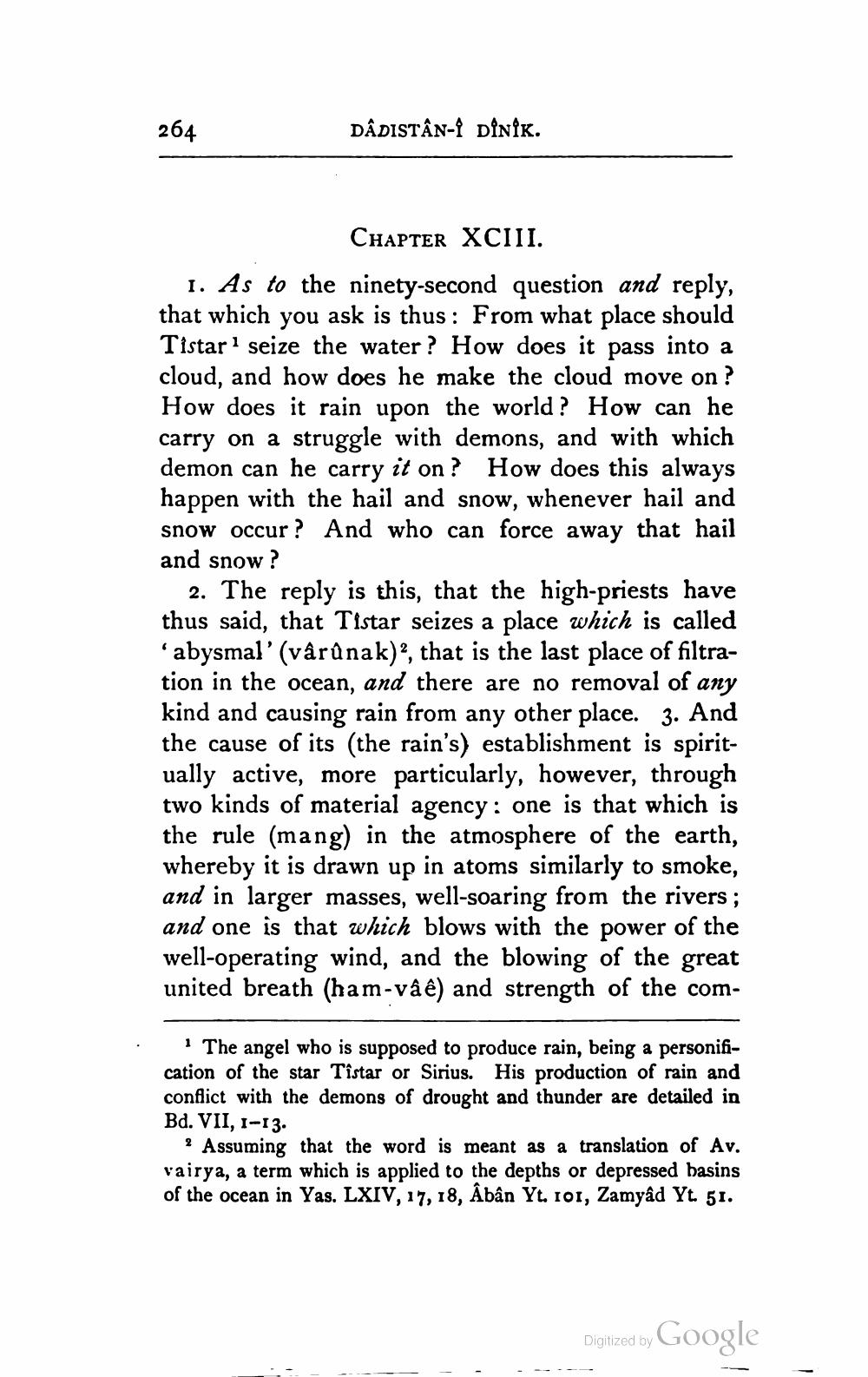________________
264
DÂDISTÂN-I DÎNÍK.
CHAPTER XCIII. 1. As to the ninety-second question and reply, that which you ask is thus: From what place should Tistar seize the water? How does it pass into a cloud, and how does he make the cloud move on? How does it rain upon the world? How can he carry on a struggle with demons, and with which demon can he carry it on? How does this always happen with the hail and snow, whenever hail and snow occur? And who can force away that hail and snow?
2. The reply is this, that the high-priests have thus said, that Tistar seizes a place which is called "abysmal' (vârûnak)?, that is the last place of filtration in the ocean, and there are no removal of any kind and causing rain from any other place. 3. And the cause of its (the rain's) establishment is spiritually active, more particularly, however, through two kinds of material agency: one is that which is the rule (mang) in the atmosphere of the earth, whereby it is drawn up in atoms similarly to smoke, and in larger masses, well-soaring from the rivers ; and one is that which blows with the power of the well-operating wind, and the blowing of the great united breath (ham-vâê) and strength of the com
1 The angel who is supposed to produce rain, being a personification of the star Tîstar or Sirius. His production of rain and conflict with the demons of drought and thunder are detailed in Bd. VII, 1-13.
? Assuming that the word is meant as a translation of Av. vairya, a term which is applied to the depths or depressed basins of the ocean in Yas. LXIV, 17, 18, Abân Yt. 101, Zamyâd Yt 51.
Digitized by Google




